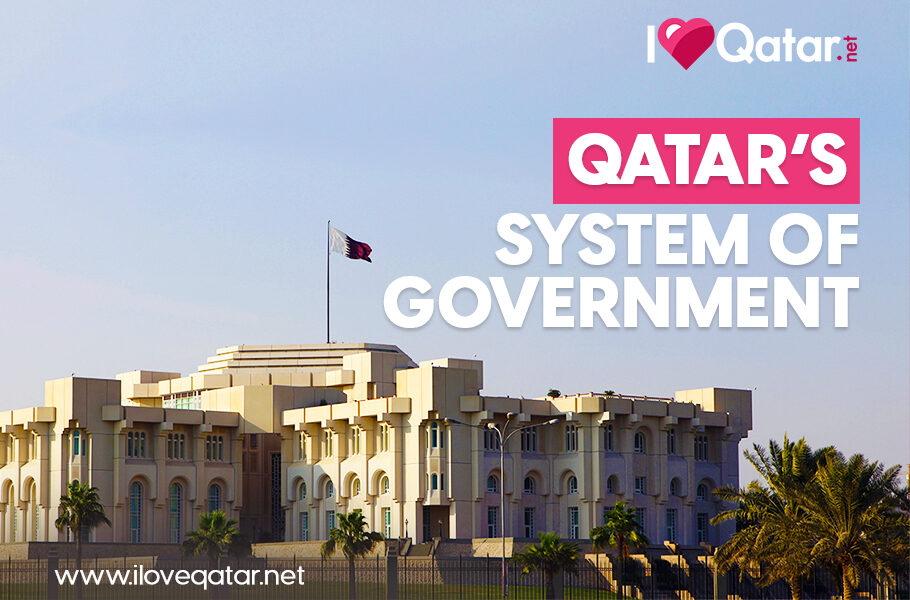
Have you ever wondered what the system of government in Qatar is like and what are the different bodies that make the State of Qatar run so smoothly? We give you a breakdown of the different layers of the government in Qatar. Let’s dive straight into it.

As we all know, H.H. the Amir, is the head of the State of Qatar and it is the duty of everyone to respect him. He is also the Commander-in-chief of the armed forces of Qatar and the Amir represents the State in Qatar, abroad and in all foreign relations.

The government in the State of Qatar is formed by the division of powers and their interlinking in terms of functioning. The Amir has the ultimate power and is assisted by the Council of Ministers and as directed in the Constitution of Qatar.
The executive power in the country is made up of the following:
The role of the Council of Ministries as the highest executive power in the State of Qatar is responsible for the running of all the internal and external affairs. These responsibilities are as directed in the Constitution and as prescribed by the law of Qatar. The responsibilities of the governmental authorities and the other governmental institutions lie in discharging public policies and other programs in the State.

The Prime Minister of the State of Qatar is in charge of the Council of Ministers in Qatar. He manages and oversees the coordination and the smooth running of work among the different ministries in Qatar and sees to that unity and synergy is maintained at all times. The decisions made by the Council of Ministers are signed in the name or on behalf of them by the Prime Minister.
The different ministries in the State of Qatar are formed by the Amiri order on the proposal of the Prime Minister. The law specifies the powers held by the different ministries the governmental authorities and the other governmental institutions and also specifies their competencies. They are as follows:
Qatari men and women over the age of 18 are eligible to vote for 30 of the 45 seats in the Consultative Assembly in Qatar. In a historic step towards democracy, in the year 1999 Qatar witnessed its first elections for the Central Municipal Council. This encouraged women to run as candidates, cast their votes and participate for the first time in the process of public affairs.
The Central Municipal Council is an independent body that carries out its responsibilities without interference and is made up of 29 elected members representing 29 constituencies from more than 242 regions in Qatar.
The Central Municipal Council elections are held every four years and the votes are counted from the date of its first meeting.

The legislative authority is known as the Shura Council or the Advisory Council. The judicial authority is entrusted in the courts of law and is in line with the Constitution of Qatar. The Shura Council, approves the general policy of the government, the budget of the State, and exercises control over the executive authority as directed in the constitution. The sittings of the Council are public. However, upon the request of the Council of Ministers or upon the request of 1/3rd of the members of the Council, the sittings may be held in camera. The Council's resolutions are passed by an absolute majority of the attending members and when the votes are equal, the speaker shall have a deciding vote.
Did you know how the government is formed and the division of power in Qatar? What else would you like to know? Write to us below! Do share this article - it keeps us going!
Source: Amiri Diwan, GCO, The Shura Council, MOFA
Cover image source: Amiri Diwan
Follow us on our social media channels:
![]() @ILQlive
@ILQlive
![]() @ILQlive
@ILQlive
![]() @ILoveQtr
@ILoveQtr
![]() ILoveQatar
ILoveQatar

You have successfully registered your account!
Please confirm your e-mail address by clicking on the URL sent to you.The e-mail usually arrives in 5-10 minutes.
How ajeeb was that!? Thanks for contributing to our community! Your post will appear after we take a quick look!